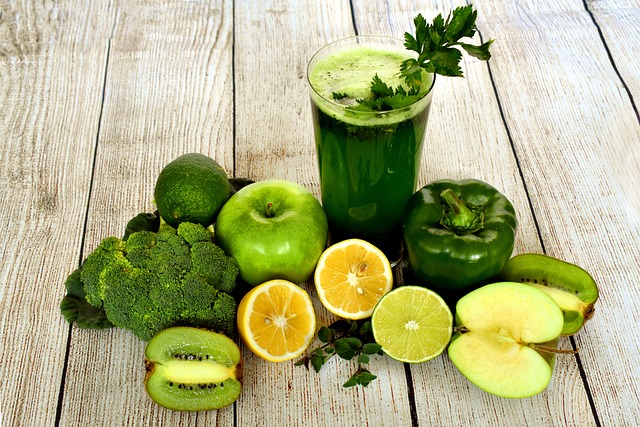How to Lose Weight with Paleo: Choosing Between Paleo and Keto Diets

Keto vs Paleo: What’s the Difference?
Now that you know a bit about Paleo, you might be curious about comparing Paleo and Keto diets. Both diets are popular for promoting weight loss, but they differ in structure and goals. Let’s break it down.
Carb Intake: Keto is Low-Carb, Paleo is Moderate
The Keto diet revolves around putting your body into ketosis, a metabolic state where it burns fat for fuel. To achieve this, you need to keep your carb intake extremely low, typically under 50 grams a day. On the other hand, the Paleo diet isn’t as strict about carbs. It allows more fruits, starchy vegetables, and natural sugars like honey, meaning it’s better suited for people who prefer a bit more dietary flexibility.

Fats: Keto Emphasizes Healthy Fats
Another key distinction when comparing Paleo and Keto diets lies in fat consumption. Keto encourages high-fat foods like avocados, nuts, oils, and fatty meats, whereas Paleo focuses more on lean proteins and avoids dairy, which is a staple in many Keto meal plans.
Choosing Between Paleo and Keto: Which Diet is Right for You?
When choosing between Paleo and Keto, the decision ultimately depends on your lifestyle, preferences, and health goals. If you’re looking to lose weight quickly by cutting carbs to the minimum, Keto might be the better option. However, if you prefer a sustainable, long-term diet with fewer restrictions, Paleo could be a more suitable choice.
Who Should Try Keto?
Keto works best for individuals who are comfortable with eliminating most carbs from their diet. It’s ideal for those who want to experience rapid weight loss or need to manage conditions like epilepsy or insulin resistance. Keep in mind, though, that strict adherence is required to stay in ketosis.
Who Should Try Paleo?
The Paleo diet appeals to people who want to eat clean without worrying about counting macros or tracking ketosis. If you value whole foods and want to avoid processed foods but still enjoy fruits and some carbs, Paleo could be the way to go. It’s also easier to maintain for the long haul.
How to Lose Weight with Paleo: Tips and Tricks
Ready to start your Paleo weight loss journey? Here are some tips to help you succeed:
- Plan Your Meals: Preparation is key to staying on track. Make a weekly meal plan with plenty of lean proteins and vegetables.
- Avoid Processed Snacks: Even Paleo-friendly snacks can add unnecessary calories. Stick to whole foods like nuts or fruits when hungry.
- Stay Active: Incorporate physical activity into your routine. A combination of strength training and cardio works best for fat loss.
- Watch Your Portions: While Paleo encourages healthy foods, it’s still important to keep portion sizes in check to avoid overeating.
Paleo and Keto: Can You Combine Them?
If you’re having trouble choosing between Paleo and Keto, you might wonder if you can combine the two. The answer is yes—some people follow a hybrid approach called Keto-Paleo. This approach emphasizes whole foods while still keeping carb intake low enough to enter ketosis. However, it requires more planning and can be challenging to sustain.
Conclusion: Paleo vs Keto – Which is Best for Weight Loss?
In the debate of choosing between Paleo and Keto, the best diet is the one you can stick to. Both have proven benefits for weight loss, but your choice should align with your lifestyle and goals. If rapid fat loss and strict discipline appeal to you, go with Keto. If you prefer flexibility and whole foods, Paleo might be your perfect match. Regardless of the diet you choose, consistency is key to long-term success.
Understanding the Keto Diet
Let’s take a deeper look at the Keto diet. The Keto diet is a low-carb, high-fat diet that aims to shift your body’s metabolism away from carbs and towards fats and ketones, a state known as ketosis. This metabolic state occurs when your body doesn’t have enough carbohydrates from food for your cells to burn for energy, so it burns fat instead. This can result in rapid weight loss.
Common foods on a Keto diet include meats, fatty fish, eggs, butter, cream, cheese, nuts, healthy oils, avocados, and low-carb veggies. Unlike Paleo, Keto diet doesn’t restrict dairy or processed foods as long as they are low in carbs. However, it does restrict high-carb vegetables, fruits, legumes, and grains, which are allowed on the Paleo diet.
How to Pick: Paleo vs Keto
The decision between following Paleo or Keto diets can be challenging. It’s essential to remember that every individual’s body responds differently to different diets. Some people may find success with a Paleo diet, while others may thrive on a Keto diet. It also depends on your personal health goals. For instance, if your primary goal is weight loss and you don’t mind giving up carbs, the Keto diet may be more suitable. On the other hand, if you want to adopt a healthier eating lifestyle that emphasizes whole foods, the Paleo diet could be a better choice.
Case Study: Paleo vs Keto
To provide a concrete example, let’s discuss a case study. John, a 35-year-old man, was struggling with his weight and had high cholesterol. He decided to try the Keto diet due to its reputation for rapid weight loss. After sticking to the diet for a few months, he saw excellent results regarding weight loss. However, he experienced adverse effects, such as constipation and nutrient deficiencies, due to the lack of fruits and high-fiber vegetables.
After consulting with a nutritionist, John decided to switch to the Paleo diet. He continued to lose weight, although not as rapidly as with the Keto diet, but he was able to add more variety to his meals. His cholesterol levels improved, and he felt healthier overall. This example shows how personal health goals and individual responses to diet plans can vary, emphasizing the importance of personalizing your diet plan.
Practical Tips for Implementing Paleo or Keto Diets
Whether you choose Paleo or Keto, here are a few practical tips to help you get started:
- Meal Prep: It’s a lot easier to stick to a diet plan when your meals are prepared in advance. Spend some time each week planning and prepping your meals. This can help you avoid resorting to unhealthy food choices when you’re short on time.
- Listen to Your Body: Pay attention to how your body responds to the diet. If you’re feeling sluggish, irritable, or have other negative symptoms, it may be a sign that the diet isn’t working for you.
- Consult a Professional: It can be beneficial to consult with a nutritionist or dietitian. They can provide personalized advice based on your health profile and goals.
Conclusion: The Path to Weight Loss is Personal
Both Paleo and Keto diets offer paths to weight loss, but the best diet for you depends on your individual needs, preferences, and lifestyle. Remember, weight loss isn’t just about the number on the scale, but about adopting healthier habits and feeling better in your body. So, whether you choose Paleo or Keto, ensure that it makes you feel good and helps you achieve your health goals.

